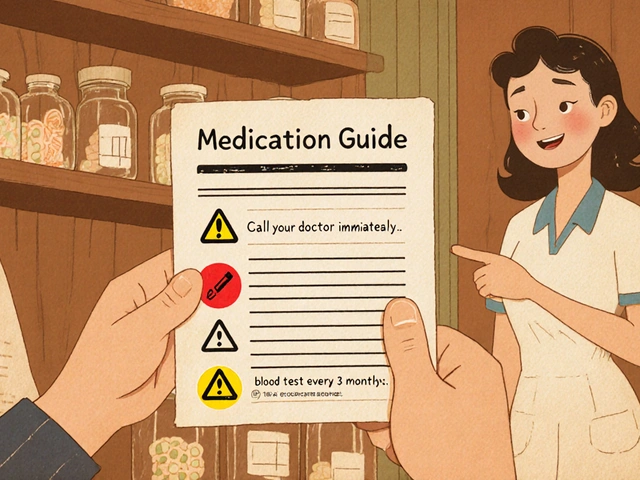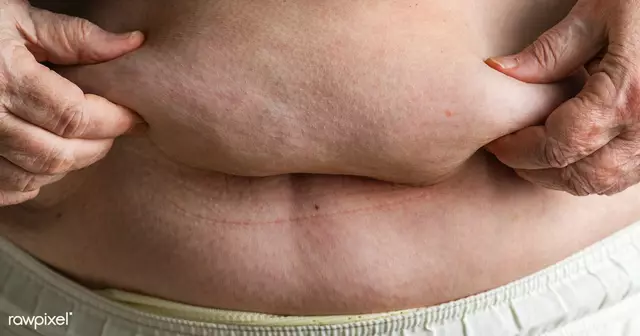Tetracycline for Bacterial Endocarditis: Indications, Dosing, and Evidence in 2025
Most patients with infective endocarditis will not be treated with a tetracycline. If you clicked this, you want the no-drama truth: do tetracyclines have a role, and if so, in whom, how long, and with what combinations? Yes-rarely-and almost always as part of combination therapy for specific intracellular or fastidious organisms. This guide gives you the exact scenarios, dosing, monitoring, and pitfalls, so you can make a fast, safe call at the bedside or in clinic.
- Typical staph, strep, and enterococcal endocarditis: use beta-lactams, vancomycin, daptomycin-not tetracyclines.
- Tetracyclines shine in culture-negative cases due to Coxiella (Q fever), Bartonella, or Brucella-always in combination, for long durations.
- Q fever endocarditis: doxycycline + hydroxychloroquine for ≥18-24 months with ophthalmology monitoring.
- Bartonella endocarditis: doxycycline + short-course gentamicin, then doxy +/- rifampin to complete at least 6 weeks.
- Brucella endocarditis: doxycycline + rifampin + an aminoglycoside; surgery is common.
What role do tetracyclines actually have in endocarditis?
The short answer: tetracycline endocarditis therapy is rarely first-line. Tetracyclines are bacteriostatic and do not provide the rapid, concentration-dependent killing we aim for in high-inoculum valve infections due to Staphylococcus aureus, viridans group streptococci, or Enterococcus faecalis. The American Heart Association (AHA) and European Society of Cardiology (ESC) guidelines continue to recommend beta-lactams, glycopeptides, lipopeptides, and synergy agents as the foundation for these pathogens. Oral step-down strategies validated by trials like POET (NEJM, 2018) did not rely on tetracyclines for classic organisms.
So where do tetracyclines belong? They’re key for intracellular or fastidious organisms that are common causes of culture-negative endocarditis: Coxiella burnetii (Q fever), Bartonella henselae or quintana, and Brucella species. In these settings, the pharmacology of doxycycline (intracellular penetration, activity against atypicals) aligns with pathogen biology. Even then, therapy is combined with other agents and is prolonged.
“The recommended treatment for chronic Q fever is doxycycline plus hydroxychloroquine for at least 18 months.” - CDC, Q Fever Clinical Guidance
As of 2025, that core message hasn’t changed: use tetracyclines when the organism demands it, not by default.
How to decide if tetracyclines belong: a step-by-step approach
Use this fast pathway when you’re evaluating suspected or confirmed infective endocarditis.
-
Define the likely pathogen bucket.
- Positive blood cultures with typical organisms (S. aureus, viridans strep, S. gallolyticus, Enterococcus): you don’t need tetracyclines.
- Persistently culture-negative (after 3-5 days) or epidemiology screams “zoonosis” or “homelessness/lice exposure”: think Coxiella, Bartonella, Brucella.
-
Take a targeted exposure history (one minute, maximum impact).
- Q fever (Coxiella): goats, sheep, cattle, abattoirs, vets, wool, Texas Hill Country ranch exposure, windborne dust near livestock birthing sites.
- Bartonella: cats (scratches, fleas), body lice (urban homelessness), shelters, alcoholism.
- Brucella: unpasteurized dairy, wild hog hunting, travel to the Mediterranean, Middle East, Latin America.
-
Order the right labs early (don’t stop standard empiric therapy).
- Coxiella: phase I and phase II IgG/IgM serology; rising phase I IgG is classic for chronic Q fever. PCR on blood or valve tissue if available.
- Bartonella: serology (IgG); PCR on blood or valve tissue increases yield; consider Warthin-Starry stain on excised valves.
- Brucella: serology (standard agglutination tests) plus prolonged culture; PCR in some centers.
- Adjunct: plasma microbial cell-free DNA (NGS) can help pinpoint Bartonella or Coxiella in culture-negative cases.
-
Keep empiric therapy guideline-based while you work up.
- Native valve, community-acquired: ceftriaxone + vancomycin is a common start pending cultures/susceptibilities.
- Prosthetic valves or healthcare-associated cases may need broader coverage per local resistance patterns and ESC/AHA guidance.
-
Switch to pathogen-targeted regimens once you have evidence.
- Coxiella burnetii endocarditis: doxycycline + hydroxychloroquine for a very long duration.
- Bartonella endocarditis: doxycycline + gentamicin (short course), then doxycycline ± rifampin.
- Brucella endocarditis: doxycycline + rifampin + aminoglycoside; plan for surgery in many cases.
-
Reassess for surgery early.
- For Brucella and many Bartonella cases with severe valve destruction, surgery plus antibiotics lowers mortality.
- Standard surgical triggers still apply: heart failure, uncontrolled infection, large mobile vegetations with embolic risk, prosthetic dehiscence.
Regimens, dosing, and duration: the quick reference you’ll actually use
Below are regimens commonly recommended by major guidelines (AHA 2015 statement; ESC 2023 guideline; CDC clinical guidance updated through 2024). Tailor to the patient, susceptibilities, and ID consult advice.
| Pathogen | When to suspect | Preferred regimen | Typical duration | Key notes |
|---|---|---|---|---|
| Coxiella burnetii (Q fever) | Culture-negative endocarditis; livestock exposure; prosthetic valves; high phase I IgG | Doxycycline 100 mg PO/IV q12h + Hydroxychloroquine 200 mg PO TID | ≥18 months (native valve) and often ≥24 months (prosthetic) | Monitor hydroxychloroquine retinal toxicity; consider drug levels (target Hcq 0.8-1.2 mg/L where available); relapse risk if stopped early |
| Bartonella henselae or quintana | Cats/fleas or body lice exposure; homeless shelters; culture-negative; high IgG titers | Doxycycline 100 mg PO/IV q12h + Gentamicin 3 mg/kg/day IV in 2-3 doses for 14 days, then continue doxycycline to complete ≥6 weeks. Consider adding Rifampin 300 mg PO q12h for prosthetic valves. | ≥6 weeks total; gentamicin for first 14 days | Gentamicin monitoring essential (troughs, renal function); rifampin for biofilm in prosthetics; surgery if valve destruction |
| Brucella spp. | Unpasteurized dairy; wild hogs; travel to endemic regions; culture-negative or prolonged culture | Doxycycline 100 mg PO/IV q12h + Rifampin 600-900 mg/day PO + Aminoglycoside (Gentamicin 5 mg/kg/day IV for 2-4 weeks or Streptomycin 1 g IM daily for 2-3 weeks) | At least 6-12 weeks; often longer; surgery common | High mortality if managed medically alone; early cardiothoracic consult advised |
| Chlamydia psittaci (rare) | Bird exposure; pneumonia with endocarditis features; culture-negative | Doxycycline 100 mg PO/IV q12h; consider adding Rifampin 300 mg q12h | ≥6 weeks | Evidence limited to case series; confirm with PCR/serology |
| Mycoplasma spp. (rare) | Extrapulmonary mycoplasma; culture-negative | Doxycycline 100 mg q12h or Azithromycin; consider Fluoroquinolone | ≥6 weeks | Consult ID; sparse evidence |
What about minocycline? It’s active against some MRSA strains, but it is not a recommended agent for native or prosthetic valve endocarditis due to S. aureus. Bactericidal alternatives (cefazolin/nafcillin, vancomycin, daptomycin, ceftaroline) with or without synergy are preferred.

Safety, monitoring, and drug interactions: make therapy stick
Doxycycline is usually well tolerated, but long durations and combination therapy raise the stakes. Here’s how to prevent avoidable problems.
- Esophagitis prevention: take with a full glass of water; avoid lying down for 30 minutes after doses.
- Chelation: separate from antacids, iron, calcium, magnesium, and zinc by at least 2-3 hours to protect absorption.
- Photosensitivity: sunscreen and sun-protective clothing; counsel outdoor workers.
- GI upset: switch to food-supported dosing if needed (modest impact on absorption is acceptable in practice to improve adherence).
Hydroxychloroquine (for Q fever) requires a plan:
- Baseline and serial ophthalmology exams (at least annually; every 6 months in long courses) for retinopathy risk.
- Consider measuring hydroxychloroquine blood levels and doxycycline levels in prolonged therapy centers-lower relapse when therapeutic.
- Watch QT risk when combined with other QT-prolonging drugs and in electrolyte disturbances.
Gentamicin adds efficacy (Bartonella) but brings toxicity risk:
- Use ideal body weight for dosing when appropriate; monitor troughs (aiming for <1 µg/mL) and serum creatinine at least twice weekly.
- Limit to the shortest effective course (often 14 days) to reduce nephrotoxicity/ototoxicity.
Rifampin is a drug-interaction machine:
- Expect dramatic reductions in levels of warfarin, DOACs, many antiretrovirals, oral contraceptives, antiarrhythmics, and transplant meds-coordinate with pharmacy.
- Check LFTs regularly; counsel on orange discoloration of bodily fluids.
Special populations:
- Pregnancy: avoid tetracyclines when possible due to fetal tooth/bone effects, especially for long courses. If a tetracycline is the only effective agent (rare), involve maternal-fetal medicine and ID for risk-benefit discussion.
- Children: short doxycycline courses are acceptable in serious rickettsial illness, but the months-long Q fever regimen makes teeth discoloration risk real-ID and pediatric cardiology input required.
- Renal impairment: doxycycline doesn’t need adjustment; gentamicin does (or avoid and pick rifampin-based alternatives if evidence allows).
- Hepatic disease: watch for rifampin hepatotoxicity; minocycline can rarely cause autoimmune hepatitis.
Scenarios, trade-offs, and practical tips
Scenario 1: culture-negative native valve endocarditis, 62-year-old rancher from Central Texas, new severe aortic regurgitation.
- Clues: livestock exposure, negative blood cultures at 72 hours, elevated phase I IgG on Coxiella serology.
- Move: start doxycycline 100 mg q12h + hydroxychloroquine 200 mg TID once chronic Q fever is supported; keep standard empiric therapy until you commit.
- Plan: duration ≥18 months, close ID follow-up, baseline ophthalmology, periodic serologic monitoring. Do not stop early for “feeling better”-relapse is common.
Scenario 2: homeless man with prosthetic mitral valve, fever, large vegetation, culture-negative, body lice noted in ED.
- Clues: body lice → Bartonella quintana risk. Send Bartonella serology and PCR.
- Move: doxycycline + gentamicin for 14 days, then doxycycline + rifampin to complete ≥6 weeks once Bartonella confirmed. Engage surgeons early.
- Tip: check gentamicin levels on day 2 and renal function every 2-3 days; plan addiction/housing support to keep therapy on track.
Scenario 3: 45-year-old hunter with aortic root abscess, history of unpasteurized dairy abroad, Brucella serology positive.
- Move: doxycycline + rifampin + gentamicin (or streptomycin). Early surgical consultation; medical therapy alone has high failure rates.
- Tip: build a drug-interaction list around rifampin before the first dose; consider inpatient start to stabilize the plan.
When not to use tetracyclines:
- Proven MSSA/MRSA native valve endocarditis: stick with cefazolin/nafcillin (MSSA), vancomycin or daptomycin (MRSA). Ceftaroline is a salvage/combination option.
- Enterococcus faecalis: ampicillin + ceftriaxone (or ampicillin + gentamicin if high-level aminoglycoside resistance is absent). Daptomycin or linezolid in select cases.
- Viridans streptococci/S. gallolyticus: ceftriaxone or penicillin-based regimens ± gentamicin in selected cases.
Useful heuristics:
- If cultures are negative and the patient has an animal or vector exposure, pivot your test menu before you pivot your antibiotics.
- If therapy lasts more than three months, assume adherence will fail unless you simplify doses, fix side effects, and schedule follow-up.
- Any prosthetic valve with atypical pathogens deserves early rifampin discussion-and a realistic review of drug interactions the same day.
Mini-FAQ and next steps
Is tetracycline (or doxycycline) ever part of empiric therapy for suspected endocarditis?
No. Empiric therapy should cover staphylococci, streptococci, and enterococci per AHA/ESC guidance. Add tetracyclines only when a specific atypical pathogen is supported by tests or very strong epidemiology.
Can I use oral doxycycline as step-down therapy for staph or strep endocarditis once the patient stabilizes?
Not recommended. Oral step-down regimens supported by trials (e.g., POET) used high-bioavailability beta-lactams, linezolid, and fluoroquinolone/rifampin combinations-not tetracyclines-for classic pathogens.
Does minocycline have a role in MRSA endocarditis?
No. Despite in vitro activity, minocycline is not advised for endocarditis due to limited bactericidal effect and high-inoculum failure risk.
How do I monitor success in Q fever endocarditis?
Use clinical response, ESR/CRP trends, and serial Coxiella serology (declining phase I IgG titers). Consider drug level monitoring for hydroxychloroquine and doxycycline when available. Maintain therapy for the full recommended duration even if titers fall quickly.
What about resistance?
Bartonella and Coxiella resistance to doxycycline is uncommon clinically, but relapse after premature discontinuation is well documented. Stick to combination therapy and full durations.
Is surgery mandatory for Brucella endocarditis?
Often yes. Case series and reviews show better outcomes with combined surgery and triple therapy. Get cardiothoracic surgery involved early.
Any quick checklist I can run through on rounds?
- Is the organism typical? If yes → standard regimens; no tetracyclines.
- Culture-negative + animal/vector exposure? Order Coxiella/Bartonella/Brucella testing now.
- Confirmed Q fever? Start doxy + hydroxychloroquine; ophthalmology on board.
- Confirmed Bartonella? Doxy + gentamicin x14 days, then doxy ± rifampin to complete ≥6 weeks.
- Confirmed Brucella? Doxy + rifampin + aminoglycoside; plan for surgery.
- Document drug interactions (rifampin), toxicity monitoring (gentamicin, hydroxychloroquine), and adherence plan.
Sources you can trust (for your own reading):
- AHA Scientific Statement on Infective Endocarditis (2015), and subsequent updates.
- ESC Guidelines for the management of endocarditis (2023).
- CDC Clinical Guidance for Q Fever (updated 2024), and CDC Bartonella guidance.
- WHO guidance on human brucellosis (recent updates).
- NEJM POET trial (2018) for oral step-down-note: not a tetracycline play.
Next steps if you’re stuck:
- Hospitalist or ED doc: keep guideline-based empiric therapy; order serologies/PCR for Coxiella, Bartonella, Brucella; loop in ID and cardiothoracic surgery if complications are present.
- Pharmacist: build an interaction map for rifampin; set gentamicin monitoring; schedule ophthalmology for hydroxychloroquine starts; counsel on doxycycline administration and sun precautions.
- Rural clinician: if specialized tests are slow, call your state lab and consider sending plasma microbial cell-free DNA to expedite organism ID; don’t stop standard therapy while waiting.
Bottom line: tetracyclines don’t fix most endocarditis. They do save lives in the right niche-Coxiella, Bartonella, Brucella-when paired with the correct partners, for long enough, with serious monitoring. Use them deliberately, not reflexively.







9 Comments
alex cristobal roque
August 29, 2025 at 05:21
When you’re faced with a case of culture‑negative endocarditis, the first thing to do is to step back and map out the epidemiologic clues before you reach for any tetracycline‑based regimen.
Take a quick exposure history – livestock work, cat scratches, unpasteurized dairy – and that will immediately narrow your differential to Coxiella, Bartonella, or Brucella.
If the patient has lived on a ranch, mentions a flock of sheep, or reports inhaling dust from birthing animals, think Q fever and order phase I IgG serology as early as possible.
When the serology comes back with a high phase I titer, the guideline‑recommended combo is doxycycline 100 mg twice daily plus hydroxychloroquine 200 mg three times daily, and you must commit to a treatment duration of at least 18 months for native valves and often 24 months for prosthetic material.
Don’t forget the ophthalmology baseline exam; hydroxychloroquine can be retinal‑toxic, and you’ll need to keep an eye on those levels every six months.
For Bartonella, the key is a short course of gentamicin – usually 14 days – paired with doxycycline for the entire six‑week course; adding rifampin for prosthetic valve involvement helps with biofilm penetration.
Monitoring gentamicin troughs (< 1 µg/mL) and renal function twice a week is essential to avoid nephrotoxicity.
In Brucella endocarditis, you’re looking at a triple regimen: doxycycline, rifampin, and an aminoglycoside such as gentamicin or streptomycin, with surgery often required because medical therapy alone has a high failure rate.
Timing of surgery is critical – most guidelines suggest early cardiothoracic involvement once valve destruction is evident or embolic risk is high.
Throughout all of these scenarios, never abandon the standard empiric coverage for staph, strep, and enterococci until you have solid microbiologic data; ceftriaxone plus vancomycin remains the backbone of initial therapy.
Once you have pinpointed the atypical pathogen, you can safely de‑escalate the beta‑lactam component but keep the tetracycline‑based combo going for the full recommended duration.
Adherence over months is a huge hurdle, so simplify dosing schedules where you can – for example, give doxycycline with food to improve tolerability without dramatically affecting absorption.
Educate patients about photosensitivity, esophagitis prevention (full glass of water, staying upright), and the importance of not stopping the meds early even if they feel better.
Finally, use serial serology or PCR if available to track treatment response – a falling phase I IgG titer in Q fever or decreasing Bartonella IgG can give you confidence that the long‑term therapy is working.
Bottom line: tetracyclines are not first‑line for most endocarditis, but in the right niche they are lifesavers when paired with the correct partners and monitored closely.
Bridget Dunning
September 10, 2025 at 12:26
In accordance with the contemporary ESC and AHA guidelines, the integration of doxycycline‑hydroxychloroquine therapy for chronic Q fever endocarditis necessitates a rigorous multidisciplinary approach, encompassing infectious disease consultation, cardiology surveillance, and ophthalmologic assessment to mitigate potential retinal toxicity inherent to prolonged hydroxychloroquine exposure.
Pharmacokinetic optimization dictates that doxycycline be administered at a dose of 100 mg bid, ensuring adequate intracellular concentrations against Coxiella burnetii, while hydroxychloroquine is titrated to 200 mg tid, maintaining plasma levels within the therapeutic window of 0.8–1.2 mg/L where such monitoring is feasible.
Evidence from longitudinal cohort analyses underscores the importance of a minimum treatment duration of 18–24 months, with serologic decline in phase I IgG serving as a surrogate marker for therapeutic success.
Concomitant implementation of baseline and periodic optical coherence tomography is paramount; the risk of hydroxychloroquine‑induced maculopathy escalates markedly beyond five years of continuous therapy, thereby necessitating vigilant ophthalmologic follow‑up.
Moreover, the potential for drug‑drug interactions, particularly with concomitant rifampin or macrolides, mandates a comprehensive medication reconciliation to obviate sub‑therapeutic doxycycline concentrations.
Finally, patient education regarding strict adherence, avoidance of photosensitizing agents, and the need for ongoing serologic monitoring constitutes an indispensable component of care delivery to ensure optimal clinical outcomes.
Shweta Dandekar
September 23, 2025 at 06:00
It is absolutely indefensible to prescribe tetracyclines indiscriminately for any form of endocarditis!; the moral responsibility of a clinician is to adhere to evidence‑based guidelines and not to succumb to the allure of a "one‑size‑fits‑all" mindset; every deviation from the standard of care must be justified by rigorous microbiologic data; prescribing doxycycline for typical Staphylococcus aureus infection is a negligent act that jeopardizes patient safety; we must champion stewardship and prioritize bactericidal agents for high‑inoculum infections; the sanctity of patient welfare supersedes convenience; let us not be seduced by the convenience of oral administration when the stakes are life‑and‑death ; adherence to beta‑lactam or glycopeptide therapy is non‑negotiable in classic cases; any clinician who sidesteps this duty is complicit in avoidable morbidity.
Gary Smith
October 5, 2025 at 23:33
Our great nation has always stood for rigorous medical standards, not the reckless experimentation some so‑called "experts" would have you believe!; we must protect American patients from foreign‑borne pathogens by ensuring that only the most proven therapies are used; any deviation to include tetracyclines without clear indication is an affront to our healthcare sovereignty!; let us unite in defending the integrity of our treatment protocols and resist the unwarranted influence of "global guidelines" that may not suit our unique patient population!; America first in clinical excellence!
Dominic Dale
October 18, 2025 at 17:06
Listen up, the whole "tetracycline is only for rare bugs" narrative is a smokescreen fed by the pharmaceutical elite to keep us in the dark about the real, covert control they have over drug approvals; the agencies that push the guidelines are funded by the very companies that profit from the narrow spectrum antibiotics, while the data on doxycycline's intracellular penetration in Coxiella, Bartonella, and Brucella is being suppressed because it threatens the monopoly of big‑pharma's blockbuster IV drugs; you have to look beyond the glossy review articles and see the pattern – every time a cheap, generic oral agent like doxy is mentioned, the language gets vague, the duration is exaggerated, and the side‑effects are buried in footnotes; this is no accident; the true cure for many culture‑negative endocarditis cases is out there, but you have to connect the dots, demand transparency from the CDC, and push for open‑access raw data; only then can we break the cycle of over‑reliance on expensive IV regimens and give patients a real, affordable option; remember, the longer the treatment course is painted as "mandatory," the more profits for infusion clinics and the less chance for a cheap oral alternative to gain traction, so stay vigilant and question every guideline footnote!
christopher werner
October 31, 2025 at 09:40
I appreciate the thoroughness of the previous points and want to emphasize that while exploring alternative regimens, it's essential to maintain clear communication with the patient about expectations, potential side effects, and the importance of follow‑up labs; establishing boundaries around what can be safely altered in the therapeutic plan helps preserve trust and ensures that any deviation from the standard of care remains patient‑centered and evidence‑guided.
Matthew Holmes
November 13, 2025 at 03:13
the drama of it all can't be understated we watch as doctors gamble with half‑spoken guidelines while patients wait in silence the stakes are high but the words are few
Patrick Price
November 25, 2025 at 20:46
sure, tetracycline can be used but only if you know what you're doing.
Travis Evans
December 8, 2025 at 14:20
Hey team, great hustle on breaking down the nitty‑gritty of those oddball bugs! 🌟 Remember, when you’re juggling doxy with hydroxychloroquine, keep the patient’s vibe in mind – sunscreen, hydration, and a simple dosing schedule can make the marathon feel like a sprint. Keep an eye on those labs, stay upbeat, and you’ll get them through the long haul with confidence!